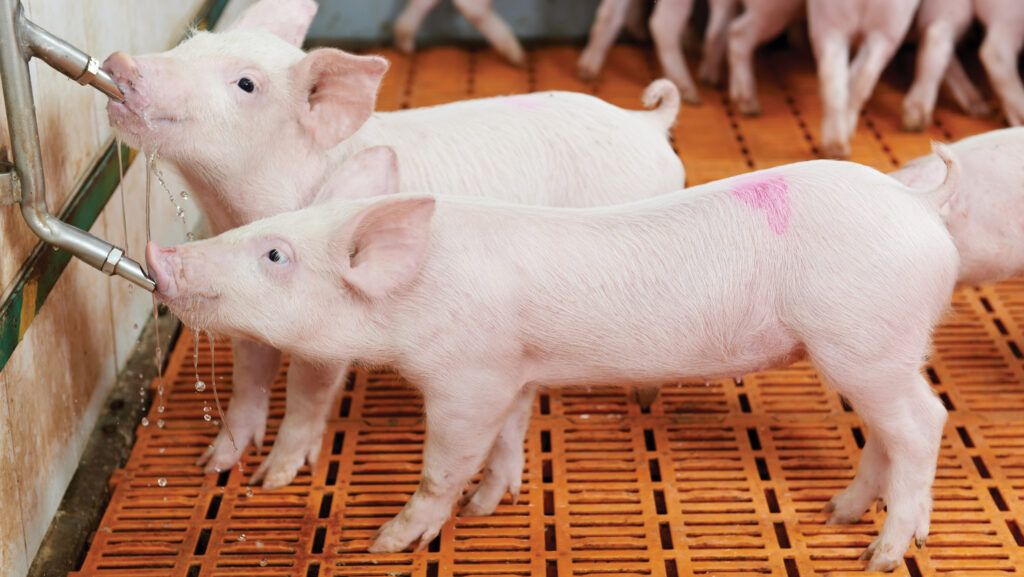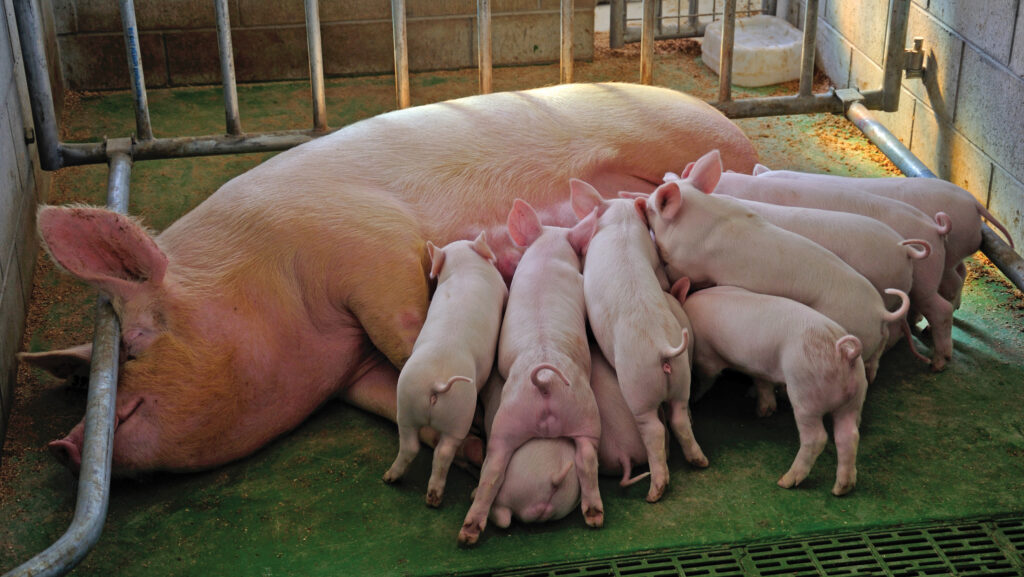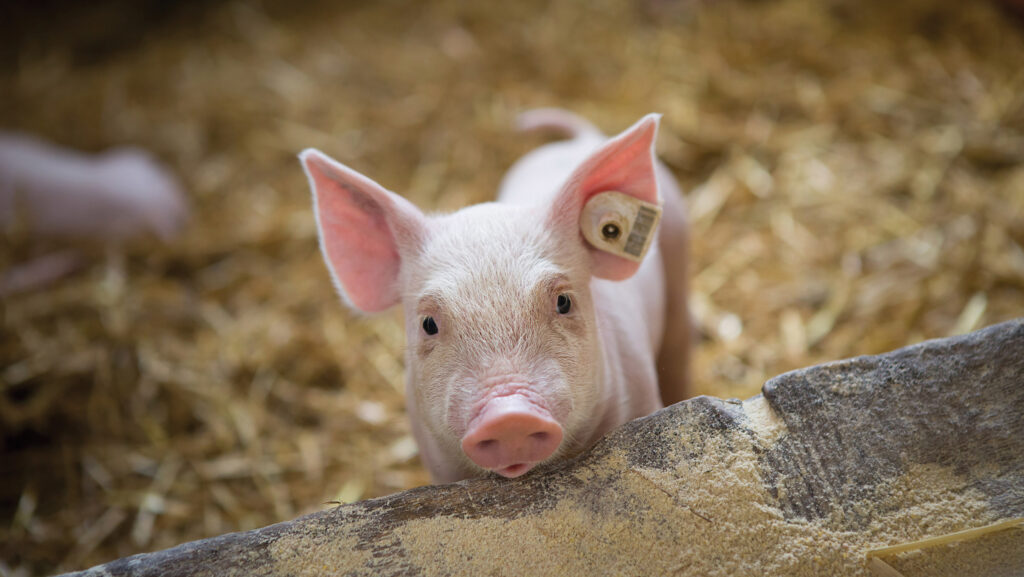How pig data management can lead to small but crucial gains
 © iStockphoto/Kadmy
© iStockphoto/Kadmy Farrow-to-finish businesses that are good at recording their breeding KPIs can turn this same level of detail to their grow-finish herd to realise incremental gains – and savings.
But this is only possible when measuring actual farm performance, rather than relying on guesswork.
Without knowing dates, weights or feed consumption, pig herds cannot highlight where performance is not realising genetic potential, according to pig vet Dr Lysan Eppink, technical adviser for Boehringer Ingelheim’s animal health swine team.
See also: ‘Whole system feed efficiency’ could help pig profits
She says that measuring inputs and outputs is essential to establish herd performance.
This is not only for benchmarking year on year and against other businesses, but to help discover whether targets are being reached.
“For a farrow-finish producer, profit will depend on the kilos of pork you sell, at what price, and the cost of producing it,” says Lysan.
“A lot is already being recorded on pig farms – albeit maybe not in an accessible way to analyse – but it’s important. Producers need to make use of the phenomenal genetic potential in their herds.”
Not all problems influencing business KPIs are obvious, she adds. While most major issues link to management, pathogens or a combination of both, Lysan says that pig herds are susceptible to what she calls “hidden disease”.
This occurs when there may be no clinical signs in pigs (such as scouring or coughing), but something is curtailing feed efficiency and, therefore, profit. Pigs may also be lost in the system if there is no regular monitoring.

© iStockphoto/Lakeview Images
Hidden disease
“Sometimes all that can be seen is a reduction in feed efficiency which, if not measured, is a hidden problem. By analysing the right data, you might find evidence of something causing issues. It could be masked by treatments for something else.
“For instance, antibiotics to treat a respiratory infection can also act against Lawsonia intracellularis, which hides the disease,” she explains.
Lawsonia is a typical example of a “hidden disease” as the bacteria are present everywhere and live in the pig’s gut, yet do not always cause issues in healthy animals.
Once the balance between pig immunity, hygiene and the environment is upset, however, clinical signs of scouring, uneven growth or mortality may be seen, says Lysan.
More often, there is just a slight change in the dung or a slightly bigger spread in pig weights, she adds. This is when it can become an underlying problem, draining efficiency.
A pig affected by Lawsonia uses energy and protein from its diet to build an immune response.
This affects growth rates, as does bacteria damage to the cells lining the small intestine, preventing full nutrient absorption and impacting feed efficiency.
The gut microbiome also changes, and this opens the door for other infections such as salmonella.
To get a handle on pig performance and efficiency, Lysan says setting up a good recording system to measure inputs and outputs is essential.
It should be consistent, accurate, and easy to maintain, but she cautions against aiming for perfection. “Some recording is better than none – and it needs to work for you.”
Recording methods
Technology is rapidly providing options for recording everything on a pig farm.
Lysan says artificial intelligence is progressing fast and programs able to analyse the data and send alarms when things are not as expected are not far off.
Although she realises not everyone likes technology and says traditional paper records can work, she points out that the amount of paper could become overwhelming and harder to analyse.
Some farms are supplying staff who readily embrace technology and like information on apps – particularly the younger generation – with tablets (good biosecurity control prohibits personal mobiles at work).
This makes it easy for them to upload data as they go.
“Recording can be as easy as writing on a whiteboard in the staff room where everybody jots down their recordings at the end of the day – making sure to avoid duplication, such as counting the same death twice,” she says.
Giving responsibility to each person in charge of a section to record their own data ensures they will understand the information, even if they just need some help with interpretating it, she adds. Consistency, however, is key.

© iStockphoto/Borevina
Consistent data
“It is important the team agrees what to record, when and where. For instance, mortality – do you just record a number, or also a date, guestimate weight and a likely cause?
As a vet, I might assume that weak piglets at birth – humanely put down to prevent suffering – are included in pre-weaning mortality. A farmer may record them as stillborn.”
For growing pigs, Lysan suggests easy things to record are date in and out (feeding days and growth rates), number in and out (survival rate) and medicine use (ideally the outcomes as well).
When moving pigs, batch weights are great as an early indicator of pig performance.
Where there are time and labour pressures, a “typical” group would give more information than not doing anything, she says, pointing out that weighing needs to be part of the routine to avoid stress.
“Another option for a weekly batch system/continuous flow farm might be to tag a few batches pigs with different colours, and see how long it takes to get them all finished.
“You might be surprised how many are held back – these are the ones costing you money.”
With feed the biggest input cost, knowing how much pigs eat during specific growth periods is essential to calculate efficiency.
If feeders do not have weight scales, Lysan says logging how much feed is in the bin before it is refilled, and how long it takes to empty, gives a good indication.
“Otherwise, you can look at how much food you have ordered over a period and compare it to the number of pigs you’ve produced,” she adds.
Analyse data
Regular data analysis provides useful management information, which must be acted upon. This is where it is important to get help from the farm team – particularly if the amount of detail recorded feels overwhelming, says Lysan.
Including the farm’s vet, nutritionist, geneticist – and even financial adviser – will investigate all components to identify small things to change that will have the most measurable impact, she points out.
This can range from immediate medical treatment to fixing ventilators, or temporarily restricting cross-fostering as a way to help control porcine reproductive and respiratory syndrome – even if it negatively impacts the number weaned.
Fortunately, pigs grow quickly and therefore results of any modifications can be seen quickly, sometimes in a matter of weeks.
Further measuring can then establish the effect of management changes to correct problems. “That is the only way to evaluate if a change is providing value for money,” says Lysan.
She adds that “measuring to manage” will improve the economic resilience of a farm, determine how well a business copes with a problem and how quickly performance bounces back.

